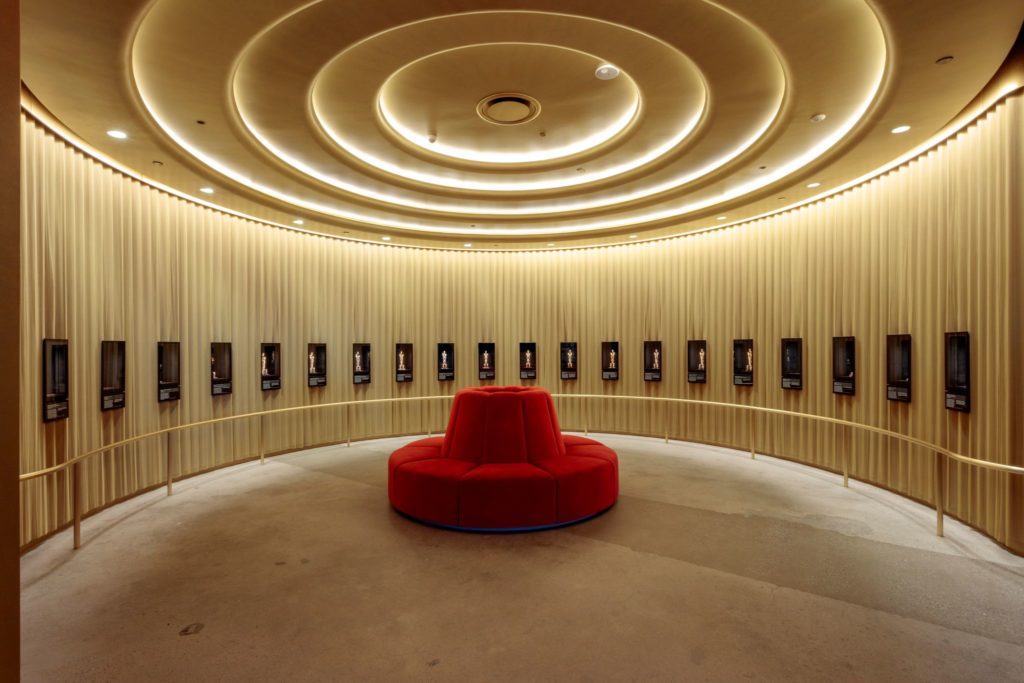
An interview with:
Omar Madkour
Exhibition Lighting Technician, Academy Museum of Motion Pictures
(Photo by Ebtihal Shedid)
The Academy Museum of Motion Pictures, Los Angeles, California, opened to the public in September 2021.
About the Academy Museum of Motion Pictures
Described as the largest institution in the United States devoted to the arts, sciences, and artists of moviemaking, the Museum is designed to be immersive, experimental, educational, and entertaining, offering unparalleled experiences and insights into movies and moviemaking.
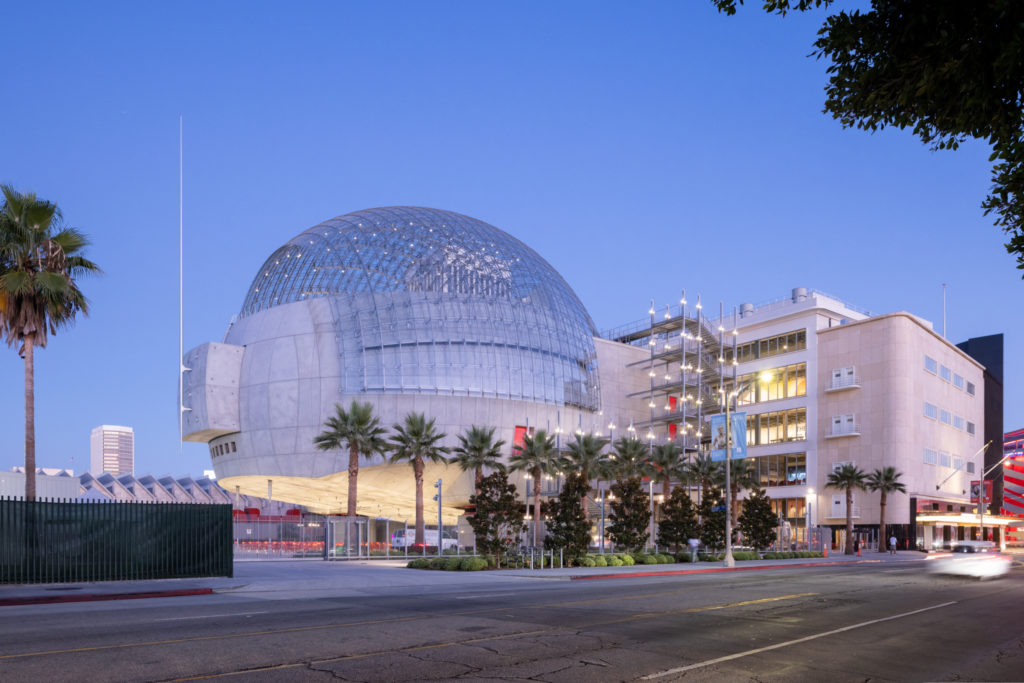
Mission
The mission of the Academy Museum of Motion Pictures is to advance the understanding, celebration, and preservation of cinema through inclusive and accessible exhibitions, screenings, programs and other initiatives. The museum works in active partnership with motion picture artists and specialists, scholars, staff, and diverse communities to contextualize and challenge dominant narratives around cinema, inspiring discourse, connection, joy, and discovery.
Design
Designed by Pritzker Prize-winning architect Renzo Piano, the Academy Museum’s seven floors feature exhibition spaces, education and special event spaces, a conservation studio, a café, and a museum store. In addition, the museum’s 1,000-seat David Geffen Theater and 288-seat Ted Mann Theater will present a year-round calendar of screenings, film series, member programs, panel discussions, family programs, and symposia.
Omar Madkour, the Museum’s exhibition lighting technician discussed the approach to lighting design in this iconic venue with the LightFair blog team.
The museum presents a wide variety of movies, film artists and critical moments in the history of the Academy. Every gallery has its own story, even though they all tie together as one big narrative. The design and lighting play an integral part to support that distinguishment.
For instance, in the Directors Inspiration: Spike Lee gallery, there is a graphic collage of stills from Lee’s movies where the actors break the fourth wall and stare directly into the camera. To honor this confrontational moment, these stills are presented on the walls of a “tunnel” or a pass-through. A guest walking through this tunnel finds themselves surrounded from both sides by the eyes of the characters from these movies. Right above their heads is a row of lights shinning on these stills – again honoring the reoccurring confrontational intent in Spike Lee’s movies.
Right next door, in The Academy Awards History gallery, the museum presents a consciously curated collection of significant speeches, artwork and text. The gallery is designed to have a plinth in the center of the room, like an island, where the didactic & the artifacts are displayed. All around the walls, there are projections of speeches that start at roughly 5’ off of the floor and extend all the way up the wall. The AV becomes a significant part of the space design. These significant speeches hover over the island and the guests (visually & sonically). In full realization of this design intent, the light design stays mostly contained in the center of the room, highlighting the text and artifacts; thus allowing the AV montage to be its own hero.
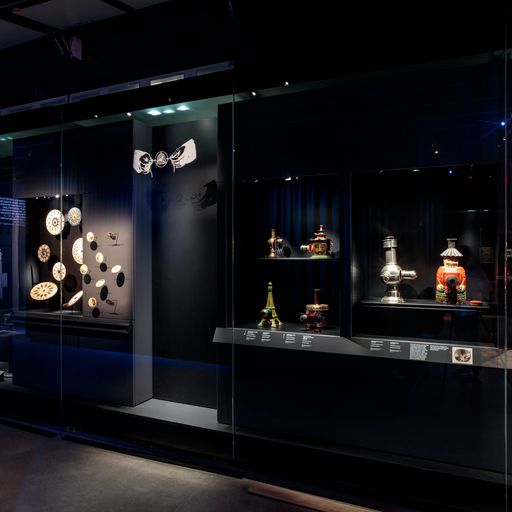
In the Path to Cinema gallery, a wonderful collection of artifacts that relate to light and shadow is displayed. The curatorial & design intent was to have a playful chiaroscuro. From backlighting of translucent artifacts to visually compelling shadows and silhouettes, this gallery is certainly elevated to being its own exceptional experience once the work lights are turned off and the gallery lights are on. Like how unique its content is, this gallery has a different aesthetic in lighting design than all the rest.
There are plenty of other examples across the building, but in short; the lighting design, led by Available Light, played a fantastic balance of taking lead on the visual at times, and stepping back at other times allowing other elements to shine.
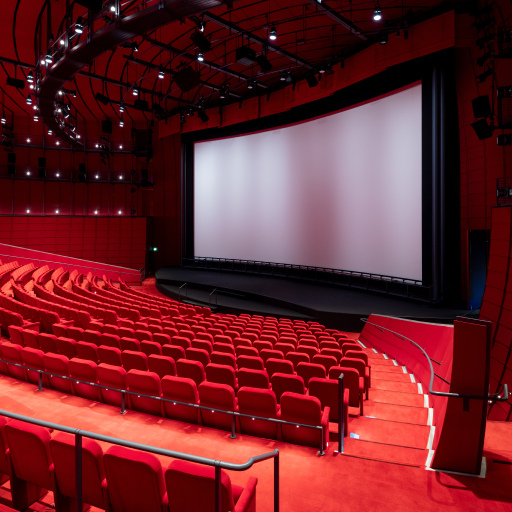
Every gallery Is different depending on the content.
In the artist-based galleries, the artist’s story was a big factor to consider. For instance, in Hildur Guðnadóttir’s gallery, it was important that the room looks like an endless space, yet has a visual focus, thus inviting the guests in and grounding them, while allowing them to “get lost” in the music. This translated into a pulsing red orb suspended in the center of the room, and a red LED tape surrounding the bottom of the only pouf in the room. With no direction whatsoever, the guests do indeed find their way into the room, sit on the pouf or even lie down and stare at the orb, while taking in Hildur’s wonderful music.
In Cinematographer Emmanuel Lubezki’s gallery, it was important that we meet a very specific color temperature and mitigate any ambient light in the room so the black color in the projected footage would look as true black as possible. Honoring the dark shots and the blacks is achievable in a movie theatre by turning off the lights, but in a gallery that has projections on two walls and content that needs to be lit on the other two, that was one of the fun challenges which lighting had to work around. Available Light had to factor the exact hanging position of every fixture in relation to the amount of bounce coming from the wall graphic and its distance to the nearest wall with a projection screen.
In galleries that are dedicated to a certain movie, the curator (and the filmmaker, if they are present) would share any specific information that is important in terms of lighting. These conversations varied from technical to poetic depending on the curator and/or movie. In the Real Women Have Curves gallery, there was an emphasis on warmth because the movie presents Latina/Latin American neighborhoods in LA in a warm and inviting tone. So the overhead lighting in the gallery utilized warm colors.
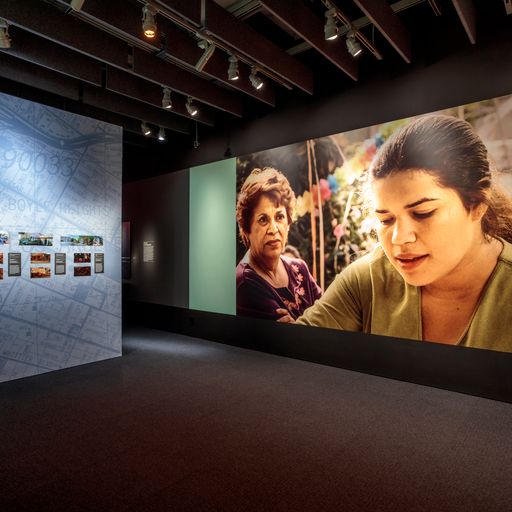
In neighboring gallery Citizen Kane, it was very important to honor the stark nature of Orson Well’s masterpiece by staying away from color. So the fixtures had to be color corrected to find the right white light that is neither “no-color warm” nor “blue”
Every gallery tells a story and has its own unique journey as to how it ended up looking the way it looks today. Therefore the factors vary. Sometimes the material or age of the artifact can be the thing that drove or inspired the lighting design. For instance, the amphibian man costume from Shape Of Water is designed with UV materials. Even though UV lights are never used on museum artifacts, this is one example where the nature of the artifact informed the lighting design to do the opposite of what is typical museum lighting.

